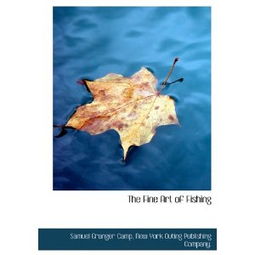Content:
Fishing is an ancient pastime that has been enjoyed by people across the globe for centuries. Whether you're a seasoned angler or a beginner looking to cast your line into the water for the first time, understanding how to fish and choosing the right fishing rod are crucial steps in ensuring a successful and enjoyable experience. In this article, we'll delve into the basics of fishing and provide you with valuable tips on selecting the perfect fishing rod for your needs.
How to Fish: A Beginner's Guide
Choose Your Fishing Spot: The first step in learning how to fish is to find a good spot. Look for areas with a strong fish population, such as lakes, rivers, or streams. Research the local fish species and their preferred habitats to increase your chances of a catch.
Select the Right Bait: Understanding what bait to use is essential. Live bait, such as worms or minnows, can be effective, but artificial lures can also work wonders. Experiment with different baits to see what the fish in your chosen spot prefer.
Learn the Basics of Casting: Casting is the act of throwing your line into the water. There are various casting techniques, but the basic steps include holding the rod with a comfortable grip, positioning your feet, and using a smooth, controlled motion to cast the line.

Patience is Key: Fishing requires patience. Fish may not bite immediately, so it's important to be patient and wait for the right moment to set the hook.
Reeling In Your Catch: Once you've hooked a fish, reel it in slowly and carefully. Avoid reeling too quickly, as this can cause the fish to become stressed or break the line.
Unhooking and Handling Fish: When you've landed your catch, be gentle. Use a dehooking tool or your fingers to remove the hook, and handle the fish with care to minimize stress.
The Art of Choosing the Right Fishing Rod
Material: The material of the fishing rod is one of the most important factors to consider. Common materials include graphite, fiberglass, and composite. Graphite rods are lightweight and sensitive, making them ideal for precise casting and detecting light bites. Fiberglass rods are more durable and flexible, making them suitable for a variety of fishing styles and environments.
Action: The action of a fishing rod refers to how it bends when pressure is applied. Fast-action rods bend towards the tip, which is great for casting light lures and detecting subtle bites. Slow-action rods bend closer to the handle, which is better for heavier lures and bottom fishing.
Length: The length of the rod should be appropriate for the type of fishing you plan to do. Longer rods are better for casting long distances and reaching deeper water, while shorter rods are more versatile and easier to handle in tight spaces.
Power: The power of a fishing rod refers to its strength and ability to handle fish. Light-power rods are suitable for small fish and finesse techniques, while heavy-power rods are ideal for larger fish and heavy-duty fishing situations.
Guides and Reel Seat: The quality of the guides and reel seat can affect the performance of your rod. High-quality guides reduce friction and improve casting, while a sturdy reel seat ensures a secure connection between the rod and reel.
Brand and Price: When choosing a fishing rod, consider your budget and the reputation of the brand. While it's tempting to go for the cheapest option, investing in a quality rod can make a significant difference in your fishing experience.
In conclusion, mastering the art of fishing involves understanding the basics of fishing techniques and selecting the right equipment, particularly the fishing rod. By following these tips and investing in a rod that suits your needs, you'll be well on your way to enjoying a successful and enjoyable fishing experience. Whether you're targeting small panfish or reeling in a trophy fish, the right fishing rod can make all the difference. Happy fishing!












